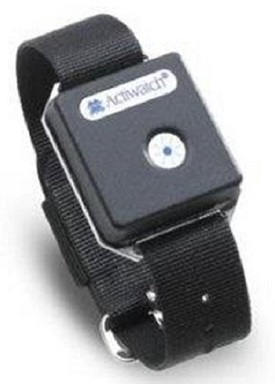Actigraph Watch for Sleep Assessment (PCS3)
Wrist actigraphy was used to provide an objective, behavioral measure of sleep latency, duration, and continuity.
Device
Two models of actigraphs were used in PCS3: the Actiwatch (model AW-64) and the Actiwatch 2 (model AW-2). Both devices are manufactured by Philips Respironics. The Actiwatch and Actiwatch 2 are designed to record a digitally-integrated measure of gross motor activity (number of arm movements per 1-minute epoch) that can be used to visualize rest activity patterns, or to quantify physical activity or sleep. They are small, non-invasive devices that are designed to be worn on the wrist as one would wear a wrist watch. As they are waterproof (except for salt water) participants could wear them while showering, thus allowing for uninterrupted activity monitoring.

Procedure
Participants began actigraphy monitoring immediately following the first Stress Reactivity session (Visit 4). Upon receiving their actigraphs and accompanying FAQ sheets, participants were instructed to wear the device on the wrist of their non-dominant arm for 24 hours a day over the course of the next week, and to not remove the actigraph unless absolutely necessary.
Participant movement was then recorded continuously for the next seven full days (168 hours), ending at the same time on the eighth day as participants began on the first day. During these seven days, participants also completed a Sleep Diary (SD) detailing their bedtime and morning activities. Recorded in the Sleep Diary were any instances of the participant removing the actigraph, as well as sleeping and waking times and naps. Sleep diary questions were derived from those used in the Pittsburgh Sleep Diary1.
Reference
1. Monk, T. H., Reynolds, C. F., Kupfer, D. J., Buysse, D. J., Coble, P. A., Hayes, A. J., Machen, M. A., Petrie, S. R. And Ritenour, A. M. (1994). The Pittsburgh Sleep Diary. Journal of Sleep Research, 3, 111–120.